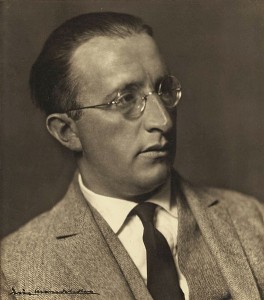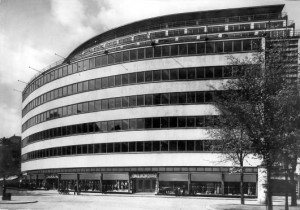
A recent documentary film on the Erich Mendelsohn (1887-1953), Incessant Visions, is a reminder of how history has treated the great architect: not well. He is best rememberd today for the idiosyncratic Einstein Tower in Potsdam, and for a series of expressionistic sketches that he drew while a soldier on the Russian front during the First World War. Yet he was by far the most productive—and the most technologically inventive—of the early modern pioneers (he was born the same year as Le Corbusier), building houses, department stores, synagogues, factories, and a cinema. If his early work is not better known, it is because much of it was destroyed during the Second World War (and in postwar reconstruction), and surviving buildings in East German, Poland, and the Soviet Union were long rendered inaccessible by the Iron Curtain. Moreover, since his architecture didn’t fit the prescribed confines of the International Style, historian/propagandists such as Sigfried Giedion, wrote him out of the story. Yet he belongs in the first ranks of the heroic age of the modern movement, alongside Mies, Corbu, and Gropius. The German phase of Mendelsohn’s career was cut short in 1933 when he fled the Nazis’ persecution of Jews. He subsequently settled in Britain (where he built three striking buildings with Serge Chermayeff), moved on to Palestine, where he built a house for Chaim Weitzmann and hospitals in Haifa and Jerusalem, and spent the last ten years of his life in San Francisco, teaching at Berkeley, and building. Always building.

Schocken Department Store, Chemnitz, 1930

